ZARAGOZA: A treasure to discover
Zaragoza is one of the hidden gems of Spain, a city with a rich history that has been shaped by its strategic location in the center of the Iberian Peninsula. As the capital of the Aragon region, Zaragoza is a vibrant and cosmopolitan city that has played a significant role in Spain's history.

CC BY 2.0 / GREGORIO PUGA BAILÓN
History
Zaragoza was founded over 2000 years ago by the Romans, who called it Caesaraugusta. The city's location on the Ebro River made it an important center of trade and commerce. Throughout its history, Zaragoza has been a melting pot of cultures, with influences from the Romans, Moors, and Christians all visible in its architecture, cuisine, and traditions.
The city became an important center of trade and culture, and many of its Roman ruins are still visible today. In the Middle Ages, Zaragoza was the capital of the Kingdom of Aragon, one of the most powerful states in Europe at the time.

CC0 1.0 / ZARATEMAN
During the Napoleonic Wars, Zaragoza played a crucial role in the resistance against the French army. The city became a symbol of Spanish resistance, with its people fiercely defending their homeland against the invaders.
One of the most iconic figures of the resistance in Zaragoza was Agustina de Aragón, a brave woman who fought alongside the Spanish soldiers. Legend has it that during a battle, Agustina was a volunteer along with other women doing the work of the rear guard. In the midst of the resistance, a grenade exploded the ammunition and killed the gunners, allowing the French to approach. She then used a cannon to repel the French troops, becoming known as "the Spanish Joan of Arc."
Agustina became a symbol of courage and determination for the people of Zaragoza and the rest of Spain. Her bravery inspired others to join the resistance, and her image was used in propaganda to rally support for the cause.
-ts1678652505.jpg)
CC-BY-SA 2.0 / ROBERTO ABIZANDA
Despite the odds, the people of Zaragoza refused to give up. They fought fiercely against the French troops, and although they ultimately lost the battle, they left a lasting legacy of resistance and courage.
Today, Agustina de Aragón is remembered as a national heroine, and her story is an inspiration to all who fight for freedom and justice.
The 19th and 20th centuries were a time of significant change for Zaragoza. During the 19th century, the city played a crucial role in the Spanish War of Independence against the French. Although the city suffered significant damage during the war, it was later rebuilt and modernized.
-ts1678699023.jpg)
CC BY 2.0 / JUANEDC
In the late 19th and early 20th centuries, Zaragoza experienced a period of growth and development. The city's population grew, and new neighborhoods were built to accommodate the influx of people. The city also became a hub for industry, with textile and food processing industries leading the way.
The 20th century was marked by political upheaval and social change. Zaragoza, like the rest of Spain, was deeply affected by the Spanish Civil War and the subsequent dictatorship of Francisco Franco. During this time, the city saw significant repression and censorship, and many of its citizens were imprisoned or executed for opposing the regime.
Following Franco's death in 1975, Spain transitioned to a democracy, and Zaragoza experienced a period of renewal and growth. The city's infrastructure was modernized, and new cultural and educational institutions were established.

Today, Zaragoza is a vibrant city with a rich cultural heritage and a thriving economy, and it continues to play a crucial role in the development of the Aragon region.
architecture
One of the most striking features of Zaragoza is its architecture. The city boasts a wide range of styles, from Roman ruins and Gothic cathedrals to Baroque palaces and modernist buildings.
One of the most iconic buildings in Zaragoza is the Basilica del Pilar, a magnificent baroque church that stands on the banks of the Ebro River. The church is said to be the first church in the world dedicated to the Virgin Mary, and it attracts millions of visitors every year.

CC BY 2.0 / JORGE FRANGANILLO
Other iconic buildings in Zaragoza include the Seo Cathedral, a stunning Gothic cathedral that dates back to the 12th century, and the Lonja Palace, a beautiful Renaissance building that was once used as a market and a meeting place for merchants.
Another notable building in Zaragoza is the Aljafería Palace, that was built in the 11th century, a stunning example of Islamic architecture that was later converted into a Gothic palace by Christian monarchs and is now a UNESCO World Heritage site.

CC BY 2.0 / JUANEDC
Zaragoza is also known for its impressive collection of modernist buildings, which reflect the city's vibrant artistic and cultural scene during the late 19th and early 20th centuries.
One of the most famous examples of modernist architecture in Zaragoza is the Casa Solans, which was designed by Pablo Monguió in 1905. The building features an ornate façade with intricate wrought-iron balconies and a stunning central staircase.
Another notable modernists buildings in Zaragoza are the Casa Juncosa, Work of José de Yarza Echenique or the Casa Jiménez, which was designed by Francisco Bayeu in 1904. The building is characterized by its colorful façade, with a range of colors and shapes that reflect the playful spirit of the modernist movement.
_3-ts1678700727.jpg)
CC0 1.0 / ZARATEMAN
Other modernist buildings in Zaragoza include the Casa Agustín Serrano, the Casa Feliz, and the Casa Pascualillo. These buildings all showcase the unique style of modernist architecture in Zaragoza, with their use of vibrant colors, ornate details, and curved lines.
CULTURE
Zaragoza has a rich cultural heritage that is reflected in its museums, galleries, and festivals. One of the most important festivals is the Fiestas del Pilar, which is held in honor of the Virgin Mary in October. The festival includes parades, concerts, and fireworks, and it attracts visitors from all over Spain.
The city also has a number of museums that showcase its history and art. The Museo de Zaragoza is one of the oldest and most important museums in Spain, and it has an impressive collection of Roman, medieval, and modern art. The Pablo Gargallo Museum is dedicated to the work of the Aragonese sculptor, while the Centro de Historias showcases contemporary art and culture.

CC BY 2.0 / FRANCIS RAHER
Cuisine
Zaragoza is known for its hearty cuisine, which reflects its agricultural heritage. The city is famous for its lamb, pork, and game dishes, as well as its pastries and sweets. One of the most popular dishes is the ternasco, a roasted lamb dish that is typically served with potatoes and vegetables.
Other traditional dishes include migas, a fried bread dish, and zaragozana, a meat stew with chickpeas.
-ts1678654043.jpg)
CC BY 2.0 / JUANEDC
One of the best places to sample Zaragoza's cuisine is the Mercado Central, a bustling market that sells fresh produce, meats, and cheeses. The market also has a number of bars and restaurants where you can try some of the city's most famous dishes.
sports
Zaragoza has a strong sports culture, with several professional teams representing the city. One of the most popular is Real Zaragoza SAD, a football team that has a long history of success in Spanish football,
although it currently competes in the second division.
The club has a long and storied history, having won numerous domestic and international titles, including six Copa del Rey titles and the UEFA Winners' Cup in 1995. The team plays at the La Romareda Stadium, which has a capacity of over 30,000 spectators and traditionally, the team colours are white shirts and socks with royal blue shorts.

CC BY-SA 4.0 / CAMPEONES 2008
Some of the most famous players to have played for Real Zaragoza include Diego Milito, "Pichi" Alonso, Gabi Fernández, Jorge Valdano, Marcelo Trobbiani, Gerard Piqué and Fernando Morientes.
Although really some historical players who are truly considered a symbol of the entity are, for example, Carlos Lapetra, Marcelino Martínez, Juan Señor, Víctor Muñoz, José Luís Violeta, Alberto Belsué, Xavi Aguado, Gustavo Poyet, etc.
-ts1678703592.jpg)
And although the entity is waiting for better times in which it can return to the elite of Spanish football, the club continues to be an important part of the city's cultural heritage and a source of pride for its fans.
Another popular sport in Zaragoza is basketball, with the Basket Zaragoza team competing in the top-level Liga ACB. The team plays at the Pabellón Príncipe Felipe, a state-of-the-art arena that can hold up to 10,000 fans.
IS IT WORTH A VISIT?
Definitely, yes! Zaragoza is a city that offers something for everyone, whether you're interested in history, culture, outdoor activities, or sports.
With its rich history, stunning architecture, delicious cuisine, and strong sports culture, Zaragoza is a must-visit destination!

CC BY 2.0 / JUANEDC
If you find the content of this post useful, informative, entertaining or anyhow valuable, do please consider sharing the content with your friends and on your social media accounts. Thanks!

CC BY 2.0 / JUANEDC
ZARAGOZA: A treasure to discover
Zaragoza is one of the hidden gems of Spain, a city with a rich history that has been shaped by its strategic location in the center of the Iberian Peninsula. As the capital of the Aragon region, Zaragoza is a vibrant and cosmopolitan city that has played a significant role in Spain's history.

CC BY 2.0 / GREGORIO PUGA BAILÓN
History
Zaragoza was founded over 2000 years ago by the Romans, who called it Caesaraugusta. The city's location on the Ebro River made it an important center of trade and commerce. Throughout its history, Zaragoza has been a melting pot of cultures, with influences from the Romans, Moors, and Christians all visible in its architecture, cuisine, and traditions.
The city became an important center of trade and culture, and many of its Roman ruins are still visible today. In the Middle Ages, Zaragoza was the capital of the Kingdom of Aragon, one of the most powerful states in Europe at the time.

CC0 1.0 / ZARATEMAN
During the Napoleonic Wars, Zaragoza played a crucial role in the resistance against the French army. The city became a symbol of Spanish resistance, with its people fiercely defending their homeland against the invaders.
One of the most iconic figures of the resistance in Zaragoza was Agustina de Aragón, a brave woman who fought alongside the Spanish soldiers. Legend has it that during a battle, Agustina was a volunteer along with other women doing the work of the rear guard. In the midst of the resistance, a grenade exploded the ammunition and killed the gunners, allowing the French to approach. She then used a cannon to repel the French troops, becoming known as "the Spanish Joan of Arc."
Agustina became a symbol of courage and determination for the people of Zaragoza and the rest of Spain. Her bravery inspired others to join the resistance, and her image was used in propaganda to rally support for the cause.
-ts1678652505.jpg)
CC-BY-SA 2.0 / ROBERTO ABIZANDA
Despite the odds, the people of Zaragoza refused to give up. They fought fiercely against the French troops, and although they ultimately lost the battle, they left a lasting legacy of resistance and courage.
Today, Agustina de Aragón is remembered as a national heroine, and her story is an inspiration to all who fight for freedom and justice.
The 19th and 20th centuries were a time of significant change for Zaragoza. During the 19th century, the city played a crucial role in the Spanish War of Independence against the French. Although the city suffered significant damage during the war, it was later rebuilt and modernized.
-ts1678699023.jpg)
CC BY 2.0 / JUANEDC
In the late 19th and early 20th centuries, Zaragoza experienced a period of growth and development. The city's population grew, and new neighborhoods were built to accommodate the influx of people. The city also became a hub for industry, with textile and food processing industries leading the way.
The 20th century was marked by political upheaval and social change. Zaragoza, like the rest of Spain, was deeply affected by the Spanish Civil War and the subsequent dictatorship of Francisco Franco. During this time, the city saw significant repression and censorship, and many of its citizens were imprisoned or executed for opposing the regime.
Following Franco's death in 1975, Spain transitioned to a democracy, and Zaragoza experienced a period of renewal and growth. The city's infrastructure was modernized, and new cultural and educational institutions were established.

Today, Zaragoza is a vibrant city with a rich cultural heritage and a thriving economy, and it continues to play a crucial role in the development of the Aragon region.
architecture
One of the most striking features of Zaragoza is its architecture. The city boasts a wide range of styles, from Roman ruins and Gothic cathedrals to Baroque palaces and modernist buildings.
One of the most iconic buildings in Zaragoza is the Basilica del Pilar, a magnificent baroque church that stands on the banks of the Ebro River. The church is said to be the first church in the world dedicated to the Virgin Mary, and it attracts millions of visitors every year.

CC BY 2.0 / JORGE FRANGANILLO
Other iconic buildings in Zaragoza include the Seo Cathedral, a stunning Gothic cathedral that dates back to the 12th century, and the Lonja Palace, a beautiful Renaissance building that was once used as a market and a meeting place for merchants.
Another notable building in Zaragoza is the Aljafería Palace, that was built in the 11th century, a stunning example of Islamic architecture that was later converted into a Gothic palace by Christian monarchs and is now a UNESCO World Heritage site.

CC BY 2.0 / JUANEDC
Zaragoza is also known for its impressive collection of modernist buildings, which reflect the city's vibrant artistic and cultural scene during the late 19th and early 20th centuries.
One of the most famous examples of modernist architecture in Zaragoza is the Casa Solans, which was designed by Pablo Monguió in 1905. The building features an ornate façade with intricate wrought-iron balconies and a stunning central staircase.
Another notable modernists buildings in Zaragoza are the Casa Juncosa, Work of José de Yarza Echenique or the Casa Jiménez, which was designed by Francisco Bayeu in 1904. The building is characterized by its colorful façade, with a range of colors and shapes that reflect the playful spirit of the modernist movement.
_3-ts1678700727.jpg)
CC0 1.0 / ZARATEMAN
Other modernist buildings in Zaragoza include the Casa Agustín Serrano, the Casa Feliz, and the Casa Pascualillo. These buildings all showcase the unique style of modernist architecture in Zaragoza, with their use of vibrant colors, ornate details, and curved lines.
CULTURE
Zaragoza has a rich cultural heritage that is reflected in its museums, galleries, and festivals. One of the most important festivals is the Fiestas del Pilar, which is held in honor of the Virgin Mary in October. The festival includes parades, concerts, and fireworks, and it attracts visitors from all over Spain.
The city also has a number of museums that showcase its history and art. The Museo de Zaragoza is one of the oldest and most important museums in Spain, and it has an impressive collection of Roman, medieval, and modern art. The Pablo Gargallo Museum is dedicated to the work of the Aragonese sculptor, while the Centro de Historias showcases contemporary art and culture.

CC BY 2.0 / FRANCIS RAHER
Cuisine
Zaragoza is known for its hearty cuisine, which reflects its agricultural heritage. The city is famous for its lamb, pork, and game dishes, as well as its pastries and sweets. One of the most popular dishes is the ternasco, a roasted lamb dish that is typically served with potatoes and vegetables.
Other traditional dishes include migas, a fried bread dish, and zaragozana, a meat stew with chickpeas.
-ts1678654043.jpg)
CC BY 2.0 / JUANEDC
One of the best places to sample Zaragoza's cuisine is the Mercado Central, a bustling market that sells fresh produce, meats, and cheeses. The market also has a number of bars and restaurants where you can try some of the city's most famous dishes.
sports
Zaragoza has a strong sports culture, with several professional teams representing the city. One of the most popular is Real Zaragoza SAD, a football team that has a long history of success in Spanish football,
although it currently competes in the second division.
The club has a long and storied history, having won numerous domestic and international titles, including six Copa del Rey titles and the UEFA Winners' Cup in 1995. The team plays at the La Romareda Stadium, which has a capacity of over 30,000 spectators and traditionally, the team colours are white shirts and socks with royal blue shorts.

CC BY-SA 4.0 / CAMPEONES 2008
Some of the most famous players to have played for Real Zaragoza include Diego Milito, "Pichi" Alonso, Gabi Fernández, Jorge Valdano, Marcelo Trobbiani, Gerard Piqué and Fernando Morientes.
Although really some historical players who are truly considered a symbol of the entity are, for example, Carlos Lapetra, Marcelino Martínez, Juan Señor, Víctor Muñoz, José Luís Violeta, Alberto Belsué, Xavi Aguado, Gustavo Poyet, etc.
-ts1678703592.jpg)
And although the entity is waiting for better times in which it can return to the elite of Spanish football, the club continues to be an important part of the city's cultural heritage and a source of pride for its fans.
Another popular sport in Zaragoza is basketball, with the Basket Zaragoza team competing in the top-level Liga ACB. The team plays at the Pabellón Príncipe Felipe, a state-of-the-art arena that can hold up to 10,000 fans.
IS IT WORTH A VISIT?
Definitely, yes! Zaragoza is a city that offers something for everyone, whether you're interested in history, culture, outdoor activities, or sports.
With its rich history, stunning architecture, delicious cuisine, and strong sports culture, Zaragoza is a must-visit destination!

CC BY 2.0 / JUANEDC
If you find the content of this post useful, informative, entertaining or anyhow valuable, do please consider sharing the content with your friends and on your social media accounts. Thanks!

CC BY 2.0 / JUANEDC
BE THE FIRST TO KNOW ABOUT THE LATEST NEWS
Get updates on the latest posts, special features and more by ilovearagon.com straight to your inbox. Subscribe to our newsletter now. It's free forever!
tickets for ZARAGOZA experiences & activities >>>
tickets for experiences & activities >>>
This Aragon site
is for sale/rent
This Aragon
site is
for sale/rent
We're looking for either a suitable partner to run and exploit commercially this site together or interested in purchasing this potentially profitable site.
We're looking for either a suitable partner to run and exploit commercially this site together or interested in purchasing it.
ZARAGOZA: A treasure to discover
Zaragoza is one of the hidden gems of Spain, a city with a rich history that has been shaped by its strategic location in the center of the Iberian Peninsula. As the capital of the Aragon region, Zaragoza is a vibrant and cosmopolitan city that has played a significant role in Spain's history.

CC BY 2.0 / GREGORIO PUGA BAILÓN
History
Zaragoza was founded over 2000 years ago by the Romans, who called it Caesaraugusta. The city's location on the Ebro River made it an important center of trade and commerce. Throughout its history, Zaragoza has been a melting pot of cultures, with influences from the Romans, Moors, and Christians all visible in its architecture, cuisine, and traditions.
The city became an important center of trade and culture, and many of its Roman ruins are still visible today. In the Middle Ages, Zaragoza was the capital of the Kingdom of Aragon, one of the most powerful states in Europe at the time.

CC0 1.0 / ZARATEMAN
During the Napoleonic Wars, Zaragoza played a crucial role in the resistance against the French army. The city became a symbol of Spanish resistance, with its people fiercely defending their homeland against the invaders.
One of the most iconic figures of the resistance in Zaragoza was Agustina de Aragón, a brave woman who fought alongside the Spanish soldiers. Legend has it that during a battle, Agustina was a volunteer along with other women doing the work of the rear guard. In the midst of the resistance, a grenade exploded the ammunition and killed the gunners, allowing the French to approach. She then used a cannon to repel the French troops, becoming known as "the Spanish Joan of Arc."
Agustina became a symbol of courage and determination for the people of Zaragoza and the rest of Spain. Her bravery inspired others to join the resistance, and her image was used in propaganda to rally support for the cause.
-ts1678652505.jpg)
CC-BY-SA 2.0 / ROBERTO ABIZANDA
Despite the odds, the people of Zaragoza refused to give up. They fought fiercely against the French troops, and although they ultimately lost the battle, they left a lasting legacy of resistance and courage.
Today, Agustina de Aragón is remembered as a national heroine, and her story is an inspiration to all who fight for freedom and justice.
The 19th and 20th centuries were a time of significant change for Zaragoza. During the 19th century, the city played a crucial role in the Spanish War of Independence against the French. Although the city suffered significant damage during the war, it was later rebuilt and modernized.
-ts1678699023.jpg)
CC BY 2.0 / JUANEDC
In the late 19th and early 20th centuries, Zaragoza experienced a period of growth and development. The city's population grew, and new neighborhoods were built to accommodate the influx of people. The city also became a hub for industry, with textile and food processing industries leading the way.
The 20th century was marked by political upheaval and social change. Zaragoza, like the rest of Spain, was deeply affected by the Spanish Civil War and the subsequent dictatorship of Francisco Franco. During this time, the city saw significant repression and censorship, and many of its citizens were imprisoned or executed for opposing the regime.
Following Franco's death in 1975, Spain transitioned to a democracy, and Zaragoza experienced a period of renewal and growth. The city's infrastructure was modernized, and new cultural and educational institutions were established.

Today, Zaragoza is a vibrant city with a rich cultural heritage and a thriving economy, and it continues to play a crucial role in the development of the Aragon region.
architecture
One of the most striking features of Zaragoza is its architecture. The city boasts a wide range of styles, from Roman ruins and Gothic cathedrals to Baroque palaces and modernist buildings.
One of the most iconic buildings in Zaragoza is the Basilica del Pilar, a magnificent baroque church that stands on the banks of the Ebro River. The church is said to be the first church in the world dedicated to the Virgin Mary, and it attracts millions of visitors every year.

CC BY 2.0 / JORGE FRANGANILLO
Other iconic buildings in Zaragoza include the Seo Cathedral, a stunning Gothic cathedral that dates back to the 12th century, and the Lonja Palace, a beautiful Renaissance building that was once used as a market and a meeting place for merchants.
Another notable building in Zaragoza is the Aljafería Palace, that was built in the 11th century, a stunning example of Islamic architecture that was later converted into a Gothic palace by Christian monarchs and is now a UNESCO World Heritage site.

CC BY 2.0 / JUANEDC
Zaragoza is also known for its impressive collection of modernist buildings, which reflect the city's vibrant artistic and cultural scene during the late 19th and early 20th centuries.
One of the most famous examples of modernist architecture in Zaragoza is the Casa Solans, which was designed by Pablo Monguió in 1905. The building features an ornate façade with intricate wrought-iron balconies and a stunning central staircase.
Another notable modernists buildings in Zaragoza are the Casa Juncosa, Work of José de Yarza Echenique or the Casa Jiménez, which was designed by Francisco Bayeu in 1904. The building is characterized by its colorful façade, with a range of colors and shapes that reflect the playful spirit of the modernist movement.
_3-ts1678700727.jpg)
CC0 1.0 / ZARATEMAN
Other modernist buildings in Zaragoza include the Casa Agustín Serrano, the Casa Feliz, and the Casa Pascualillo. These buildings all showcase the unique style of modernist architecture in Zaragoza, with their use of vibrant colors, ornate details, and curved lines.
CULTURE
Zaragoza has a rich cultural heritage that is reflected in its museums, galleries, and festivals. One of the most important festivals is the Fiestas del Pilar, which is held in honor of the Virgin Mary in October. The festival includes parades, concerts, and fireworks, and it attracts visitors from all over Spain.
The city also has a number of museums that showcase its history and art. The Museo de Zaragoza is one of the oldest and most important museums in Spain, and it has an impressive collection of Roman, medieval, and modern art. The Pablo Gargallo Museum is dedicated to the work of the Aragonese sculptor, while the Centro de Historias showcases contemporary art and culture.

CC BY 2.0 / FRANCIS RAHER
Cuisine
Zaragoza is known for its hearty cuisine, which reflects its agricultural heritage. The city is famous for its lamb, pork, and game dishes, as well as its pastries and sweets. One of the most popular dishes is the ternasco, a roasted lamb dish that is typically served with potatoes and vegetables.
Other traditional dishes include migas, a fried bread dish, and zaragozana, a meat stew with chickpeas.
-ts1678654043.jpg)
CC BY 2.0 / JUANEDC
One of the best places to sample Zaragoza's cuisine is the Mercado Central, a bustling market that sells fresh produce, meats, and cheeses. The market also has a number of bars and restaurants where you can try some of the city's most famous dishes.
sports
Zaragoza has a strong sports culture, with several professional teams representing the city. One of the most popular is Real Zaragoza SAD, a football team that has a long history of success in Spanish football,
although it currently competes in the second division.
The club has a long and storied history, having won numerous domestic and international titles, including six Copa del Rey titles and the UEFA Winners' Cup in 1995. The team plays at the La Romareda Stadium, which has a capacity of over 30,000 spectators and traditionally, the team colours are white shirts and socks with royal blue shorts.

CC BY-SA 4.0 / CAMPEONES 2008
Some of the most famous players to have played for Real Zaragoza include Diego Milito, "Pichi" Alonso, Gabi Fernández, Jorge Valdano, Marcelo Trobbiani, Gerard Piqué and Fernando Morientes.
Although really some historical players who are truly considered a symbol of the entity are, for example, Carlos Lapetra, Marcelino Martínez, Juan Señor, Víctor Muñoz, José Luís Violeta, Alberto Belsué, Xavi Aguado, Gustavo Poyet, etc.
-ts1678703592.jpg)
And although the entity is waiting for better times in which it can return to the elite of Spanish football, the club continues to be an important part of the city's cultural heritage and a source of pride for its fans.
Another popular sport in Zaragoza is basketball, with the Basket Zaragoza team competing in the top-level Liga ACB. The team plays at the Pabellón Príncipe Felipe, a state-of-the-art arena that can hold up to 10,000 fans.
IS IT WORTH A VISIT?
Definitely, yes! Zaragoza is a city that offers something for everyone, whether you're interested in history, culture, outdoor activities, or sports.
With its rich history, stunning architecture, delicious cuisine, and strong sports culture, Zaragoza is a must-visit destination!

CC BY 2.0 / JUANEDC
If you find the content of this post useful, informative, entertaining or anyhow valuable, do please consider sharing the content with your friends and on your social media accounts. Thanks!

CC BY 2.0 / JUANEDC
BE THE FIRST TO KNOW ABOUT THE LATEST NEWS
Get updates on the latests posts, special features and more by ilovearagon.com straight to your inbox. Subscribe to our newsletter now. It's free forever!
TICKETS FOR ANDORRA EXPERIENCES & ACTIVITIES >
WE USED TO MAKE THIS SITE!
So easy to use
Drag and drop tools
Multilingual websites
Unlimited storage
Unlimited websites
Free SSL - No ads
Connect your domain
Buy domains
Free plan options
Support us
For the love of Aragon, will you do us a favour? Help to develop & maintain this site and be part of what makes Aragon so special by clicking the button below.
Declare your love
for Aragon
This Domain Name
is for Sale
Help to maintain this website and be part of what makes Aragon so special sharing its content with your friends and on your social media accounts.
We're looking for either a suitable partner to run and exploit commercially this site together or interested in purchasing this potentially profitable internet domain.
Looking for Aragon articles?
This Andorra
site is
for sale/rent
A huge selection of Aragon related books, sticks, flags, souvenirs, t-shirts and much more. Brow our suggestions here!
We're looking for either a suitable partner to run and exploit commercially this site together or interested in purchasing it.
This Andorra site
is for sale/rent
This Andorra
site is
for sale/rent
We're looking for either a suitable partner to run and exploit commercially this site together or interested in purchasing this potentially profitable site.
We're looking for either a suitable partner to run and exploit commercially this site together or interested in purchasing it.
Support us
This Domain Name
is for Sale
For the love of Aragon, will you do us a favour? Starting from only 1€ help to develop & maintain this site and be part of what makes Aragon so special by clicking the button below. Thank you!
We're looking for either a suitable partner to run and exploit commercially this site together or interested in purchasing this potentially profitable internet domain.
where to stay - hotel offers >>>
WE USED TO MAKE THIS SITE!
So easy to use
Drag and drop tools
Multilingual websites
Unlimited storage
Unlimited websites
Free SSL -No ads
Connect your domain
Buy domains
Free plan options
This Domain Name
is for Sale
Declare
your love for
Aragon
We're looking for either a suitable partner to run and exploit commercially this site together or interested in purchasing this potentially profitable internet domain.
Don't keep this to yourself. Spread the word sharing this site and its contents with your friends and on your social media accounts.
This Domain Name
is for Sale
Declare
your love for Aragon
We're looking for either a suitable partner to run and exploit commercially this site together or interested in purchasing this potentially profitable internet domain.
Don't keep this to yourself. Spread the word sharing this site and its contents with your friends and on your social media accounts.
Support us
This Domain Name
is for Sale
For the love of Aragon, will you do us a favour? Help to develop & maintain this site and be part of what makes Aragon so special by clicking the button below.
We're looking for either a suitable partner to run and exploit commercially this site together or interested in purchasing this potentially profitable internet domain.
WE USED TO MAKE THIS SITE!
So easy to use
Drag and drop tools
Multilingual websites
Unlimited storage
Unlimited websites
No ads
Free SSL
Connect your domain
Buy domains
Free plan options
This Domain Name
is for Sale
This Aragon Website is for Sale/Rent
We're looking for either a suitable partner to run and exploit commercially this site together or interested in purchasing this potentially profitable internet domain.
We're looking for either a suitable partner to run and exploit commercially this site together or interested in purchasing this potentially profitable site.
Have an idea? Let's hear it!
Don't keep this to yourself. Spread the word sharing this Aragon site and its contents with your friends an on your social media accounts. And contact us or let's meet up if you think you are the right person to run, rent or even to own this website.
Have an idea? Let's hear it!
Contact us too if you want to run, rent or even to buy this website.
Any ideas? Wanna collaborate? Contact Us!
Have an idea? Let's hear it!
We're looking for either a suitable partner to run and exploit commercially this site together or interested in purchasing this potentially profitable internet domain.
Don't keep this to yourself, Spread the word sharing this Aragon site and its contents clicking the buttons below. And contact us or let's meet up if you think you're the right person to run, rent or even to own this website.
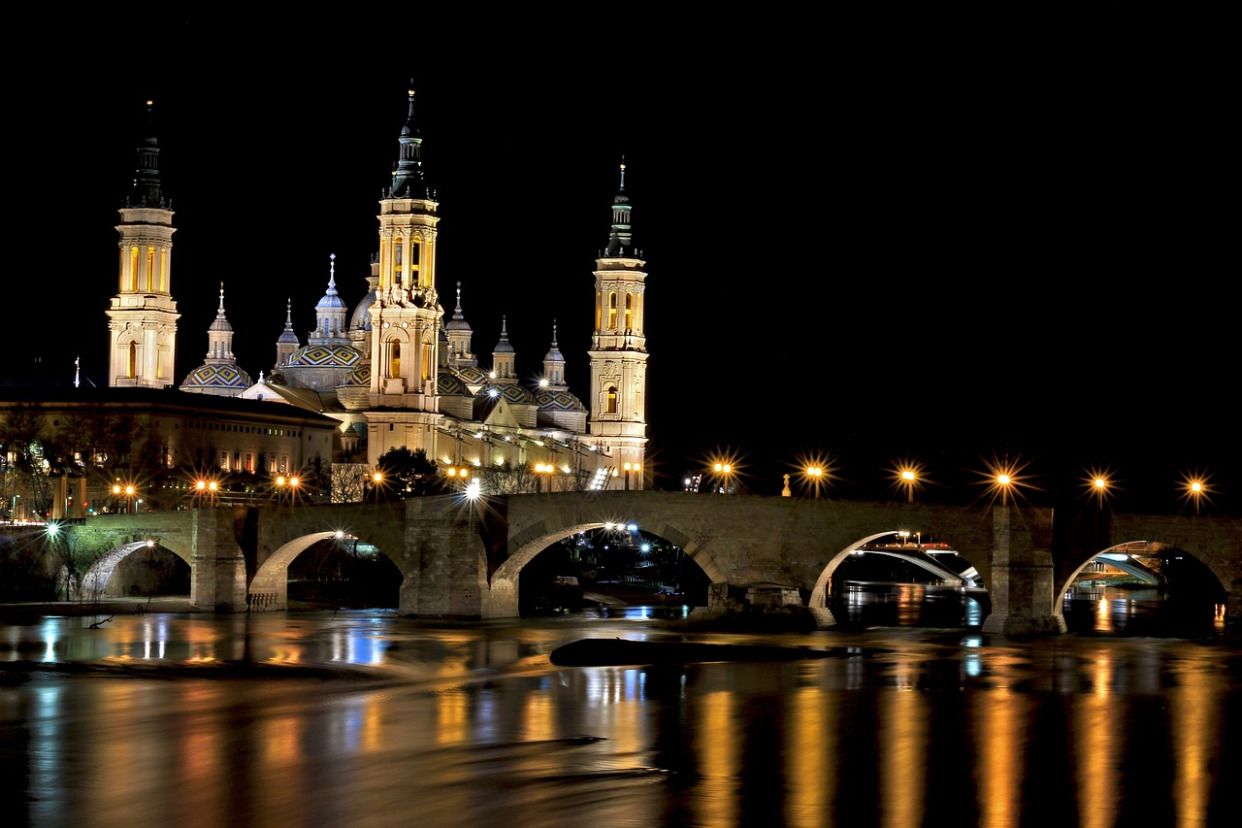
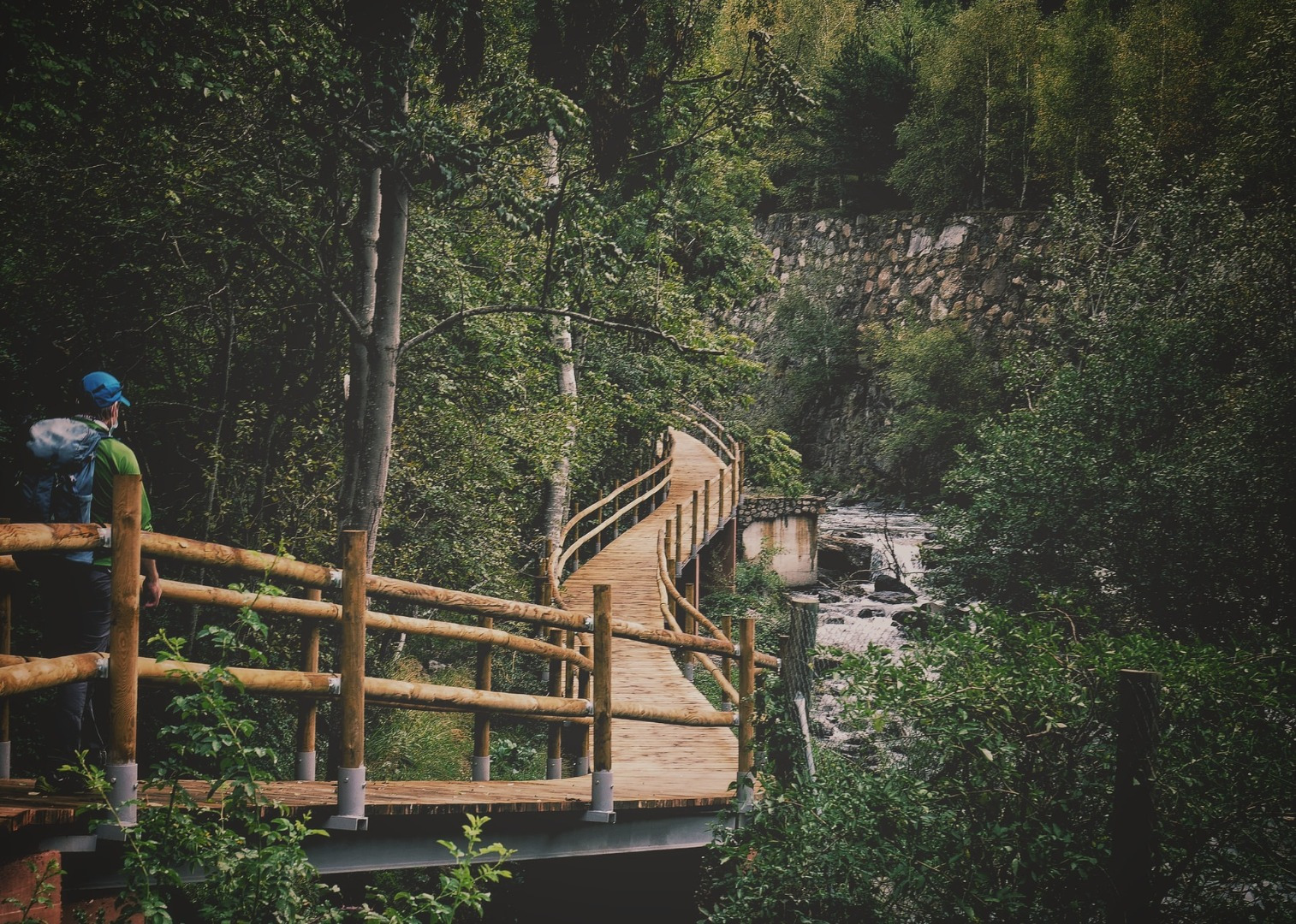

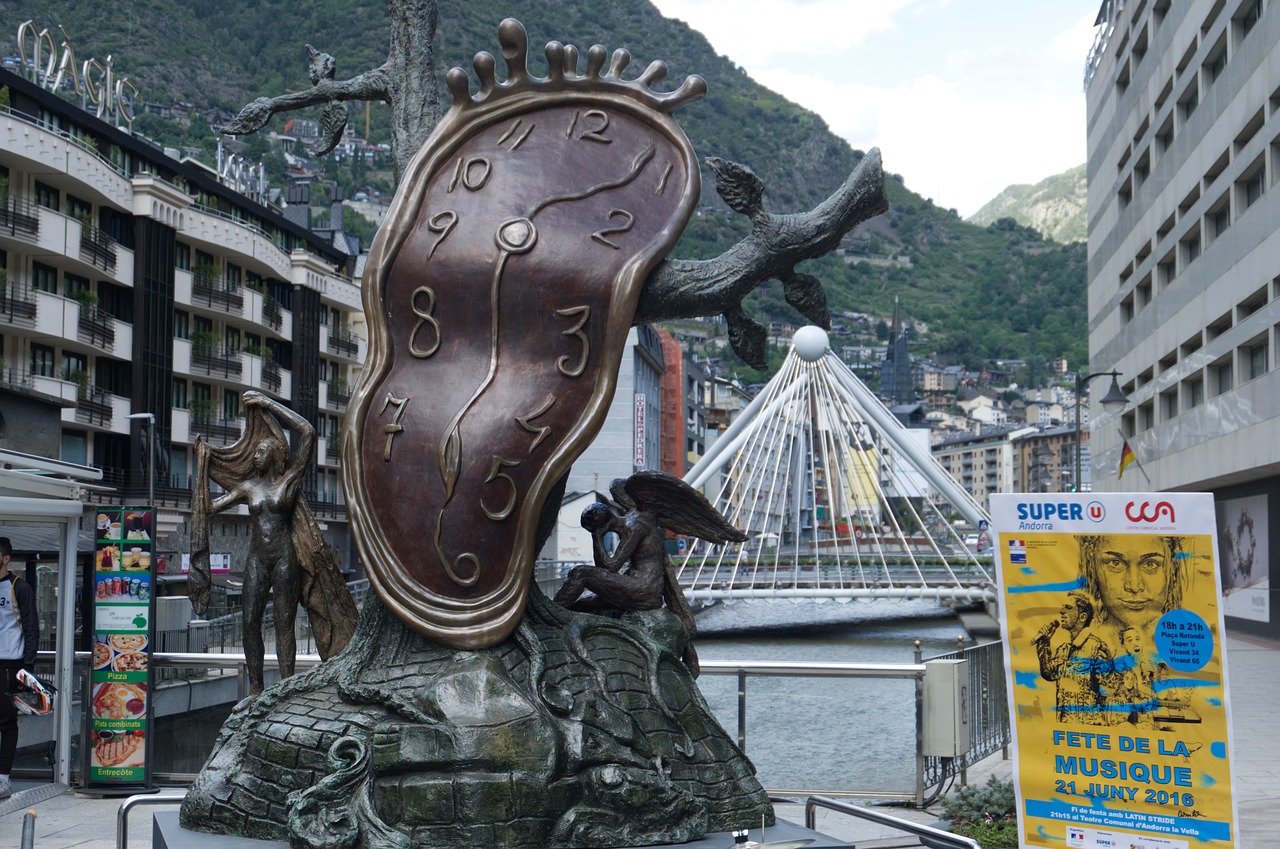
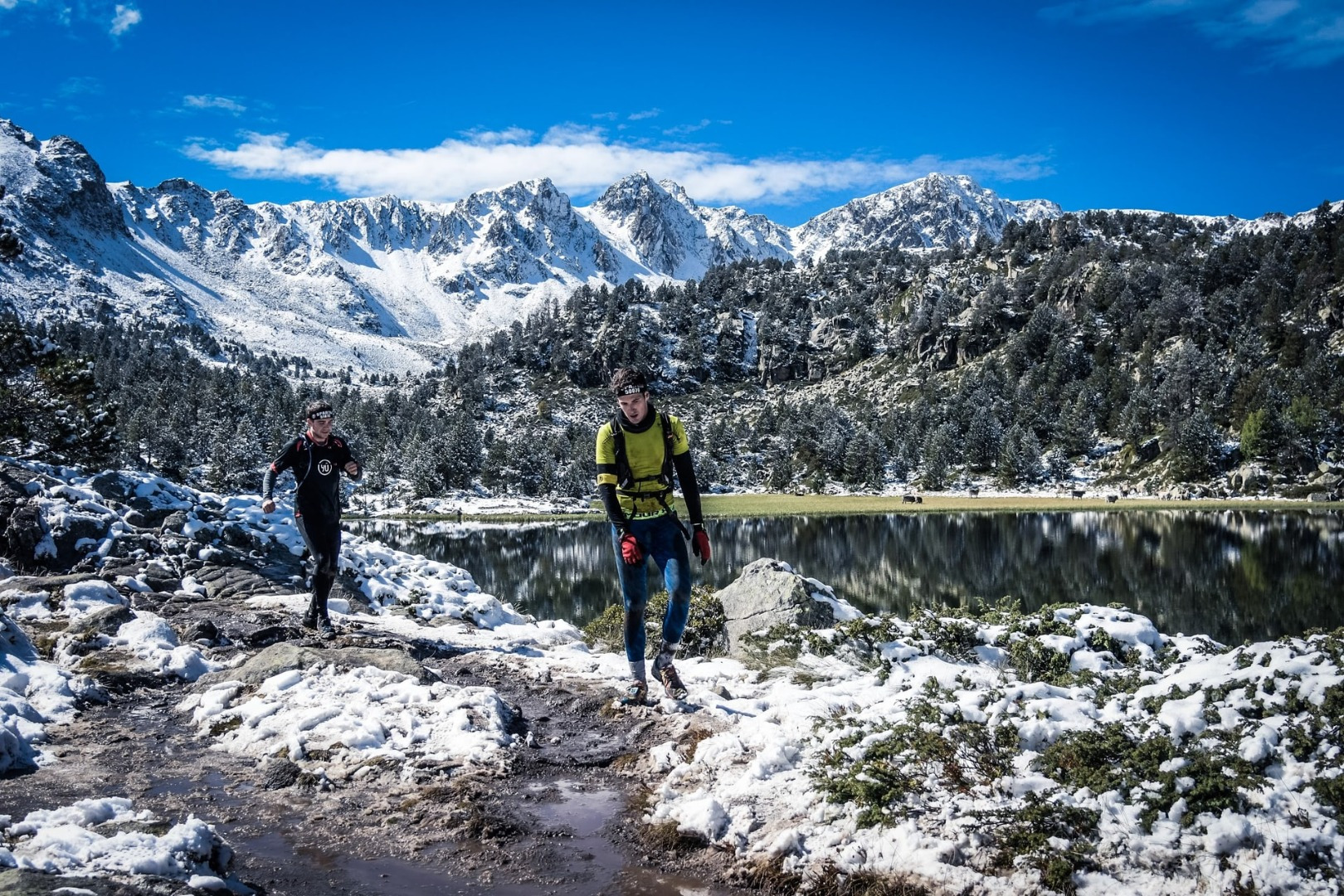
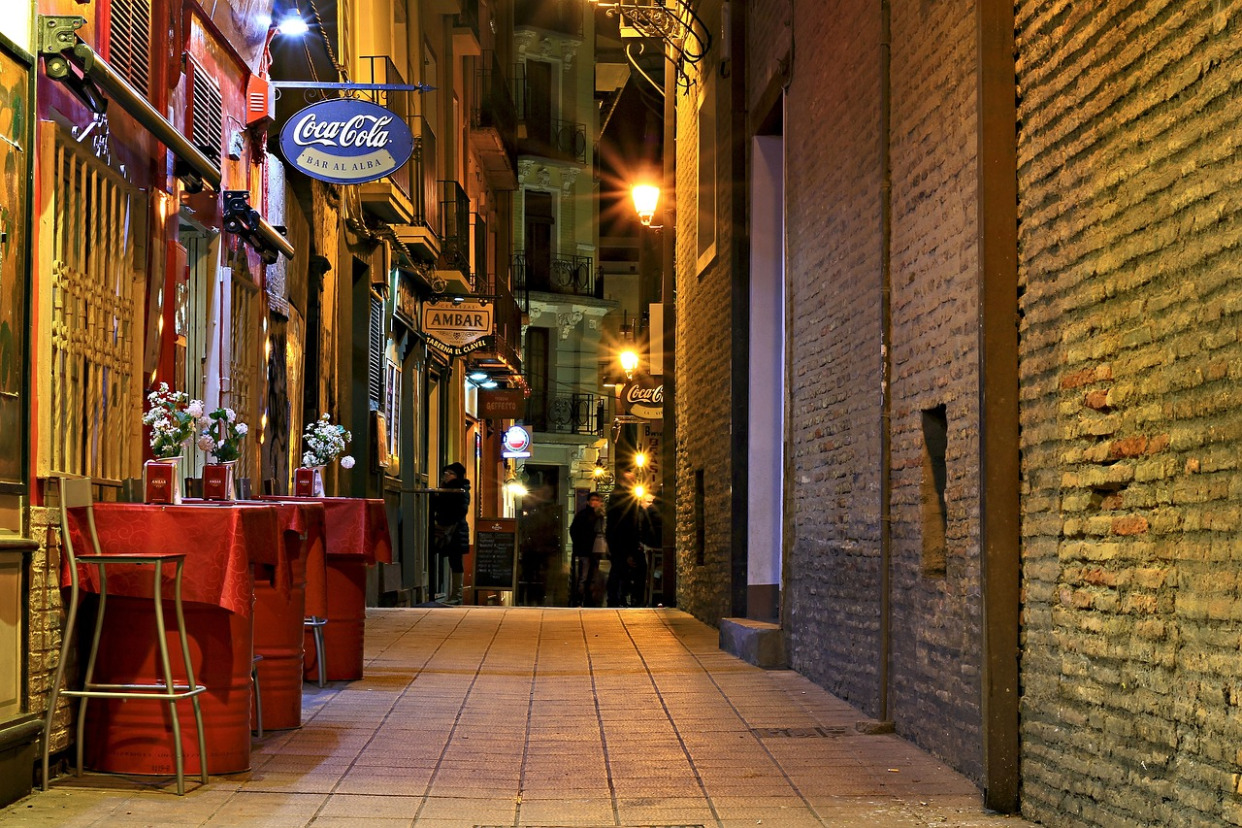


-ts1678652505.jpg)
-ts1678699023.jpg)



_3-ts1678700727.jpg)

-ts1678654043.jpg)

-ts1678703592.jpg)

